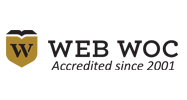Clinical Practicum Activities
/by Vinh Le
Skin/ Wound Management
- Focused physical exam:
- Pressure ulcer risk
- Limb perfusion (ABI, color, pain, etc.)
- Wound pain
- Healing ridge (surgical incision)
- Neuropathy
- Limb edema
- Assessment of impediments to wound healing and repair.
- Assessment of wounds and periwound condition
- Identify and implement plan of care for:
- Pressure ulcers
- Arterial ulcers
- Venous ulcers
- Dehisced surgical wounds
- Neuropathic ulcers
- Selection and use of:
- Compression therapies
- Pressure reduction devices for bed, chair, operating room, etc.
- Selection and use of appropriate products for:
- Maintaining moist wound environment
- Exudate management
- Odor control
- Perform and interpret:
- Wound culture
- Ankle/brachial index
- Selection and use of appropriate debridement techniques:
- Autolysis
- Mechanical
- Chemical
- Conservative sharp
- Assessment and management of wound/skin complications:
- Fungal infection
- Contact dermatitis
- Irritant dermatitis
- Bacterial infection
- Hypergranulation tissue
- Observe surgical procedures
- Participate/Observe systems improvement projects (i.e. pressure ulcer prevalence and incidence studies or skin champion activities)
Ostomies/Continent Diversions
- Focused abdominal assessment
- Bowel Sounds
- Skin Condition
- Folds, scars, etc.
- Rectus muscle
- Assessment of:
- Rectal reflex (anal wink)
- Assess and perform stoma site selection on various body builds, abdominal contours and patient ages.
- Selection and use of variety of pouching equipment (one-piece, 2-piece, nonadhesive, reusable, belt, skin barrier paste, powder, adhesives, etc.)
- Assessment of stomal conditions (location, lumen opening, color, size, mucocutaneous junction, anomalies, etc.)
- Assessment and management of peristomal complications:
- Fungal infection
- Irritant & contact dermatitis
- Mucocutaneous separation
- Prolapse & hernia
- Retraction (stomal & peristomal)
- Assess need for and perform:
- Colostomy irrigation
- Ileal lavage
- Intubation of continent diversions
- Urine specimen from urinary diversion
- Assessment and management of:
- Peritubular skin irritation
- Drainsite condition
- Percutaneous tubes/drains
- Fistulas/ draining wounds
- Observe:
- Surgical procedures
- Bowel exams (i.e. colonoscopy)
- Setup for outpatient clinic
- Teaching and counseling (fluids/diet, ADL/travel, clothing, sexuality, night drainage, etc.)
- Participate/Observe systems improvement projects (i.e. product formulary)
Continence
-
Focused Assessments:
- Abdominal
- Pelvic
- Perianal/perineal skin
-
Assessment of:
- Rectal reflex (anal wink)
- Bulbocavernosal reflex (BCR)
- Strength of pelvic muscles
- Prolapse
-
Assessment and management of perineal/perianal skin condition:
- Fungal infection
- Irritant dermatitis
- Contact dermatitis
-
Observe & interpret:
- Voided stream
- Post void residual
- Bladder diary
- Bowel diary
-
Perform & interpret:
- Bladder scan for PVR
- Provocative maneuvers
-
Provide instructions for:
- Pelvic muscles exercises
- Clean intermittent catheterization
- Bowel training program
- Bladder training program (routine, timed, etc.)
- Urge inhibition
-
Selection and use of:
- Containment products (condoms, rectal pouch, catheters, garments, etc.)
- Skin protectants
- Pessaries
-
Observe:
- Biofeedback
- Electrical stimulation
- Urodynamics
- Pelvic floor testing
- Setup for outpatient clinic
-
Teaching and counseling:
- Fluids/diet
- Laxitives, cathartics, bulking agents
- Participate/Observe systems improvement projects (i.e. product formulary)
